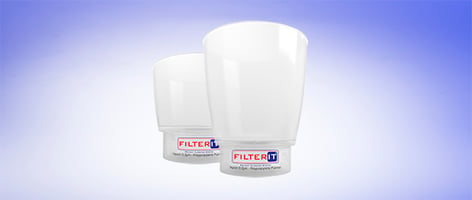Regarding PCR (Polymerase Chain Reaction), every detail in your workflow can impact your results....
Rubber Free vs. Traditional Syringes: What’s Best for Your Workflow?
When it comes to laboratory and clinical workflows, the choice of syringe can have a significant impact on sample integrity, accuracy, and even safety. While traditional syringes with rubber-tipped plungers have been a mainstay for decades, rubber-free plastic syringes are gaining popularity rapidly. But what’s the difference, and which is best for your workflow? Let’s break down the pros and cons of each option.
What Are Rubber-Free Plastic Syringes?
Rubber-free plastic syringes are designed with plungers made entirely of plastic, eliminating the need for a rubber tip or gasket. This design innovation addresses several limitations of traditional syringes and offers unique benefits for sensitive applications.
Traditional Syringes: The Classic Choice
Features:
- Plunger tip made of rubber (often latex or synthetic rubber)
- Widely available in various sizes and formats
- Used for general liquid handling, sample transfer, and injections
Advantages:
- Smooth plunger movement due to the rubber’s flexibility
- Effective seal for drawing and dispensing liquids
- Familiar and cost-effective for many standard applications
Limitations:
- Potential for Contamination: Rubber tips can leach additives, lubricants, or plasticisers into samples, which may interfere with sensitive assays or analytical techniques.
- Allergen Risk: Natural rubber latex can cause allergic reactions in some users or patients.
- Chemical Compatibility: Certain solvents and reagents can degrade rubber, potentially compromising seals or leading to sample contamination.
- Particle Shedding: Over time, rubber tips can shed microscopic particles, potentially affecting sample purity.
Rubber Free Plastic Syringes: The Modern Alternative
Features:
- Plunger and barrel made entirely of medical-grade plastic (no rubber components)
- Designed for high chemical compatibility and low extractables
- Available in sterile and non-sterile formats
Advantages:
- No Leachables or Extractables: Eliminates the risk of rubber-derived contaminants, making them ideal for sensitive analytical, pharmaceutical, and clinical applications.
- Enhanced Chemical Resistance: Suitable for a broader range of solvents, reagents, and biological samples.
- Reduced Allergen Risk: Completely latex-free, making them safe for users and patients with latex allergies.
- Improved Sample Integrity: No risk of rubber particle shedding or lubricant contamination.
- Consistent Performance: Reliable seal and smooth plunger action without the variability of rubber components.
Limitations:
- Plunger Feel: Some users may notice a slightly different tactile feel compared to rubber-tipped plungers, though modern designs have largely minimised this difference.
- Cost: May be slightly more expensive than basic traditional syringes, but the benefits often outweigh the cost for critical applications.
Which Syringe Is Best for Your Workflow?
Choose Traditional Syringes If:
- You’re performing routine liquid handling where sample purity is not a critical concern.
- Cost is a primary factor, and chemical compatibility is not an issue.
- You’re working with aqueous solutions and non-sensitive assays.
Choose Rubber Free Plastic Syringes If:
- You require the highest sample integrity for analytical chemistry, mass spectrometry, or pharmaceutical applications.
- You’re working with solvents, reagents, or biological samples that may interact with rubber.
- You need to avoid latex or rubber allergens in clinical or patient-facing settings.
- You want to minimise the risk of contamination from leachables, extractables, or particles.
Conclusion
The choice between rubber-free and traditional syringes depends on your workflow’s specific needs. For routine tasks, conventional syringes are often sufficient. However, for sensitive, high-stakes, or contamination-prone applications, rubber-free plastic syringes offer distinct advantages in terms of purity, safety, and reliability.
Ready to upgrade your workflow?
Explore Chromatography Direct’s range of rubber-free plastic syringes—engineered for precision, safety, and peace of mind.





